Bearded dragons are among the most popular pet reptiles—and for good reason. They’re hardy, friendly, and fairly low-maintenance. But like any animal, they need proper care to stay healthy and stress-free. Knowing how to keep your bearded dragon healthy and happy is key to a long and rewarding relationship.
This guide is perfect for beginners and intermediate owners. You’ll learn how to build the right habitat, feed a balanced diet, and watch for common health issues. We’ll also cover how to keep your bearded dragon active, calm, and comfortable.
If you’re looking for a complete, trusted source on how to keep your bearded dragon healthy and happy, you’re in the right place.
💡 Want to explore more? We’ve included links to detailed posts in each section if you want to dive deeper.
Creating the Ideal Bearded Dragon Habitat
Creating the perfect habitat is essential to keeping your bearded dragon healthy and happy. A well-designed enclosure mimics their natural environment and provides the right temperature, lighting, and space they need to thrive. In this section, we’ll cover everything you need to set up a safe and comfortable home for your dragon.
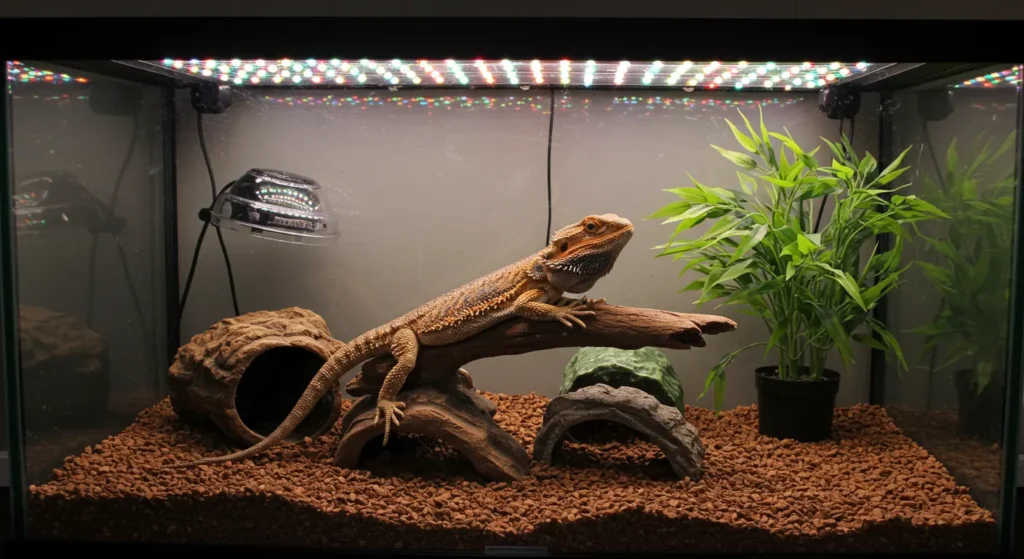
Choosing the Right Tank Size and Setup
Selecting the right tank size is the first step in creating a suitable habitat. For baby bearded dragons, a 20-gallon tank is enough. However, adult dragons need at least a 40- to 75-gallon enclosure to move comfortably. A larger tank allows your dragon to thermoregulate better and reduces stress. The setup should include secure ventilation to maintain airflow while keeping your pet safe. Use a glass or PVC tank with a tight-fitting screen lid to prevent escapes. Position the tank in a low-traffic area, away from drafts and direct sunlight.
Lighting, UVB, and Heating Essentials
Lighting is crucial for your dragon’s health. Bearded dragons need UVB light to synthesize vitamin D3 and absorb calcium properly. Without UVB, they risk developing metabolic bone disease. Use a high-quality UVB bulb designed for reptiles, and replace it every 6 to 12 months as effectiveness decreases. Provide a basking light that creates a warm spot between 95°F and 110°F. The cooler side of the tank should be around 75°F to 85°F to allow temperature regulation. Use timers to simulate natural day and night cycles, with 10 to 12 hours of light daily.
Safe Substrates and Decor Items
Choosing a safe substrate is vital to prevent health risks. Avoid loose substrates like sand or wood chips, as these can cause impaction if ingested. Instead, use reptile carpet, ceramic tiles, or non-adhesive shelf liner. These are easy to clean and safe for your dragon. Decorate the tank with sturdy branches, hides, and rocks to encourage natural climbing and hiding behaviors. Make sure all decor items are stable and free of sharp edges. Natural plants can add beauty but only use species safe for bearded dragons. For a more detailed guide on selecting the best substrate, check out our article on Best Bearded Dragon Substrate for a Happy and Healthy Pet.
Daily and Weekly Cleaning Checklist
Maintaining cleanliness keeps your dragon healthy and prevents disease. Spot-clean the tank daily by removing feces, uneaten food, and shed skin. Wipe down water dishes and food bowls regularly. Once a week, do a deeper clean by removing substrate and disinfecting the enclosure with reptile-safe cleaners. Avoid harsh chemicals that can harm your pet. Clean decor items during this routine as well. Always wash your hands before and after handling your dragon or cleaning its habitat to reduce infection risks.
Bearded Dragon Nutrition: What to Feed and Why
Proper nutrition is essential for a healthy and happy bearded dragon. Knowing what to feed and why helps you provide a balanced diet that supports growth and vitality. In this section, we’ll explore the key foods your dragon needs and how to feed them safely.
Core Diet: Insects, Greens, and Occasional Fruits
Bearded dragons are omnivores, so their diet must include both animal and plant matter. Insects such as crickets, dubia roaches, and black soldier fly larvae provide essential protein. Greens like collard greens, mustard greens, and dandelion greens supply vitamins and fiber. Kale, in particular, is a favorite among many owners. To understand the benefits of kale and how to serve it safely, check out our detailed post on Bearded Dragon Kale Benefits and How to Serve It Safely. Occasionally, fruits like blueberries and mango can be given as treats, but only in small amounts. Avoid feeding too much fruit because it contains sugars that can upset digestion.
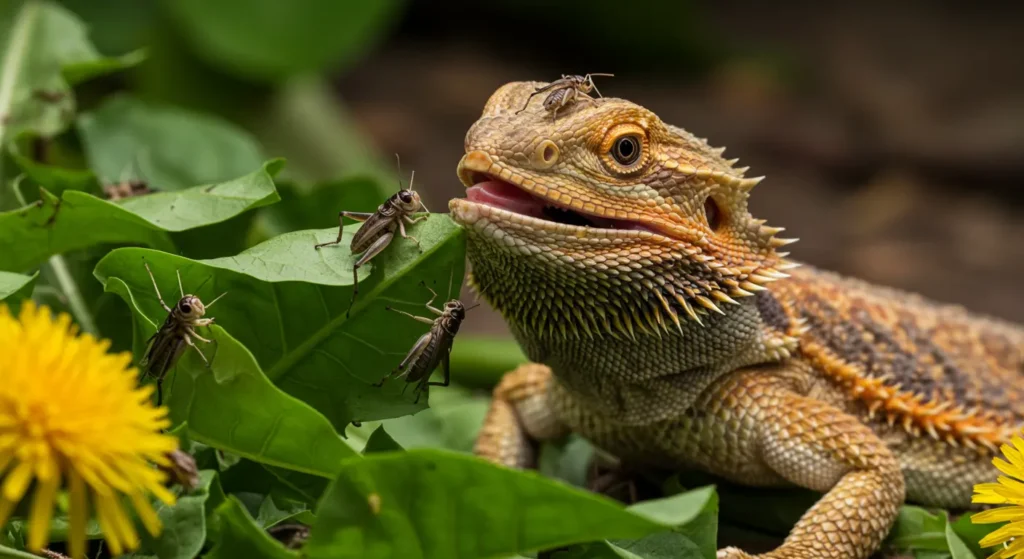
Feeding Schedule by Age
Feeding needs change as your bearded dragon grows. Babies and juveniles require more protein and should be fed insects daily. Adults need more vegetables and fewer insects, so aim for a diet that is about 75% greens and 25% insects. Feeding frequency also decreases with age; young dragons eat multiple small meals daily, while adults typically eat once or twice per day. Adjust portions based on your dragon’s appetite and health.
Safe and Unsafe Foods List
Knowing which foods are safe is crucial to avoid poisoning or digestive problems. Safe greens include collard, mustard, turnip, and dandelion greens. Avoid spinach and iceberg lettuce, as they can cause nutrient imbalances. Safe insects include crickets and dubia roaches. Avoid wild-caught insects or mealworms regularly, as they may carry parasites or be hard to digest. Never feed your dragon avocado, rhubarb, or anything toxic.
Supplements and Calcium Dusting Tips
Supplements ensure your dragon gets vital nutrients not always present in their diet. Calcium powder is the most important supplement and should be dusted on insects regularly. For young dragons, dust insects with calcium every feeding. Adults require calcium about 3-4 times a week. Additionally, use a vitamin D3 supplement if your UVB lighting is weak or inconsistent. Always remove uneaten supplemented food to prevent overdosing.
Keeping Your Bearded Dragon Healthy
Keeping your bearded dragon healthy means watching for key signs and taking prompt action. Knowing what is normal helps you spot problems early. This section explains how to tell if your dragon is healthy and what to do if it’s not.
Signs of a Healthy vs. Unhealthy Bearded Dragon
A healthy bearded dragon is alert and active. Its eyes are clear, bright, and free of discharge. The skin should be smooth and shed regularly without issues. A healthy appetite and normal stool are good signs. In contrast, an unhealthy dragon may show lethargy, swollen limbs, or lack of appetite. Watch for sunken eyes, unusual swelling, or discolored patches on the skin. Early detection of these signs can prevent serious health problems.
Common Illnesses (MBD, Parasites, Impaction)
Metabolic Bone Disease (MBD) is common and results from calcium or vitamin D3 deficiency. Symptoms include soft jaws, twitching limbs, and difficulty moving. Parasites can cause weight loss, diarrhea, and lethargy. Impaction happens when your dragon swallows substrate or food it cannot digest, leading to constipation and swelling. Knowing these illnesses and their symptoms helps you act fast to save your pet’s health.
When to Call a Reptile Vet
If your bearded dragon shows signs like persistent lethargy, swollen limbs, or refusal to eat, contact a reptile veterinarian. Also seek help if your dragon has abnormal breathing or visible wounds. Early vet visits improve outcomes. Don’t wait for symptoms to worsen; prompt care is crucial for recovery. Regular check-ups can also prevent many health issues before they start.
Preventative Health Measures and Hygiene
Good hygiene helps keep your bearded dragon healthy. Clean the enclosure regularly and remove waste daily. Wash your hands before and after handling your pet. Provide fresh water and clean feeding dishes. Use UVB lighting properly to prevent vitamin D3 deficiency. Quarantine new reptiles to avoid spreading parasites or diseases. These simple steps greatly reduce health risks.
How to Keep Your Bearded Dragon Happy and Stress-Free
Keeping your bearded dragon happy is just as important as keeping it healthy. Reducing stress helps your pet stay active and thrive. This section covers key tips to create a calm, enriching environment for your dragon.
Recognizing Stress and Fixing the Causes
Bearded dragons can get stressed by many factors. Signs include darkened beard color, glass surfing, and loss of appetite. Loud noises, improper temperatures, or frequent handling can cause stress. Identify the cause by observing your dragon’s environment and behavior. Fix problems by adjusting lighting, temperature, or reducing handling. Creating a quiet and comfortable space helps reduce stress.
Bonding With Your Bearded Dragon Safely
Building trust with your bearded dragon takes time and patience. Start by offering food from your hand. Handle your dragon gently and avoid sudden movements. Keep sessions short and gradually increase them. Pay attention to your dragon’s body language. A calm dragon will relax and explore your hands. Bonding safely strengthens your relationship and reduces stress.
Enrichment Ideas: Exploration, Toys, Handling
Enrichment keeps your bearded dragon mentally and physically active. Provide climbing branches, hides, and basking spots. Safe toys like small balls or tunnels can encourage play. Let your dragon explore outside the tank in a secure area. Regular, gentle handling also helps socialize your pet. These activities prevent boredom and promote happiness.
Creating a Safe Routine Your Dragon Can Rely On
Bearded dragons thrive with consistent routines. Feed and handle them at similar times daily. Maintain regular lighting and temperature cycles. A predictable schedule reduces anxiety and builds trust. Keep the enclosure clean and comfortable. A stable environment helps your dragon feel secure and happy.
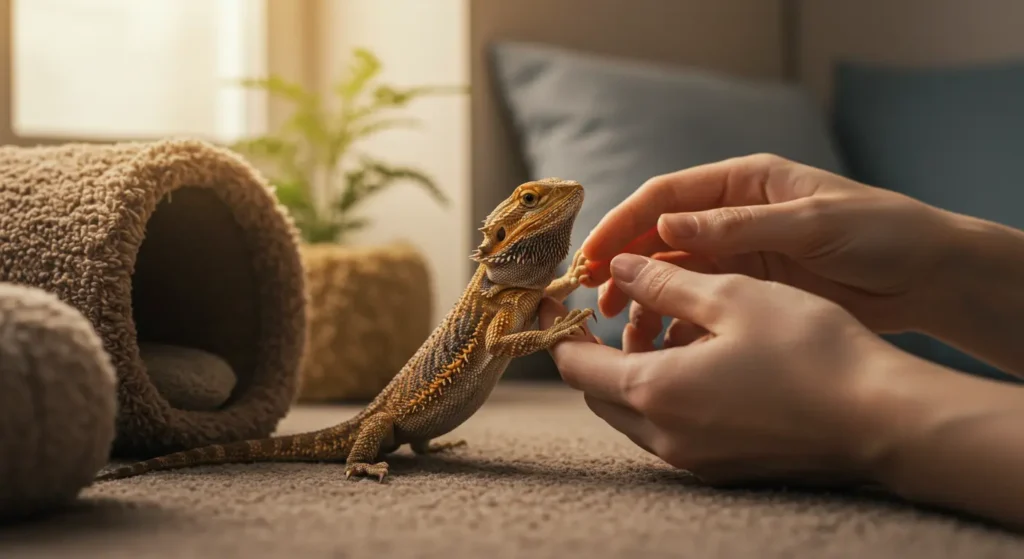
Frequently Asked Questions (FAQ)
How Often Should I Bathe My Bearded Dragon?
Bathing helps with hydration and shedding. Most bearded dragons benefit from a bath 1 to 3 times per week. Use lukewarm water that is shallow—just enough to cover their belly. Baths should last about 10 to 15 minutes. Avoid using soap or chemicals. Always supervise your dragon during bath time to ensure safety.
Do Bearded Dragons Get Lonely?
Bearded dragons are solitary reptiles by nature. They do not get lonely like social animals. In fact, housing multiple dragons together can cause stress and fighting. Instead, focus on providing enrichment and interaction with you. Gentle handling and regular time outside the tank help fulfill their social needs.
How Can I Tell If My Bearded Dragon Is Stressed?
Stress signs include darkening of the beard, pacing, hiding, and refusal to eat. Some dragons may also show glass surfing—scratching or climbing tank walls. Changes in behavior or aggression can be a sign too. If you notice these, check habitat conditions and handling routines. Reducing stress factors quickly improves your dragon’s well-being.
What’s a Good Temperature for Their Tank?
Bearded dragons need a temperature gradient in their enclosure. The basking spot should be between 95°F and 110°F. The cooler side of the tank should stay around 75°F to 85°F. Nighttime temperatures can safely drop to about 65°F. Use reliable thermometers to monitor temperatures daily and adjust as needed.
Conclusion
Keeping your bearded dragon healthy and happy takes dedication, but the rewards are worth it. By providing the right habitat, balanced nutrition, regular health checks, and a stress-free environment, you ensure your pet thrives for years. Remember, every bearded dragon is unique, so observe your dragon closely and adjust care as needed. Use this guide as your starting point and explore related posts to deepen your knowledge. With patience and care, you’ll enjoy a strong bond and a vibrant, happy bearded dragon.

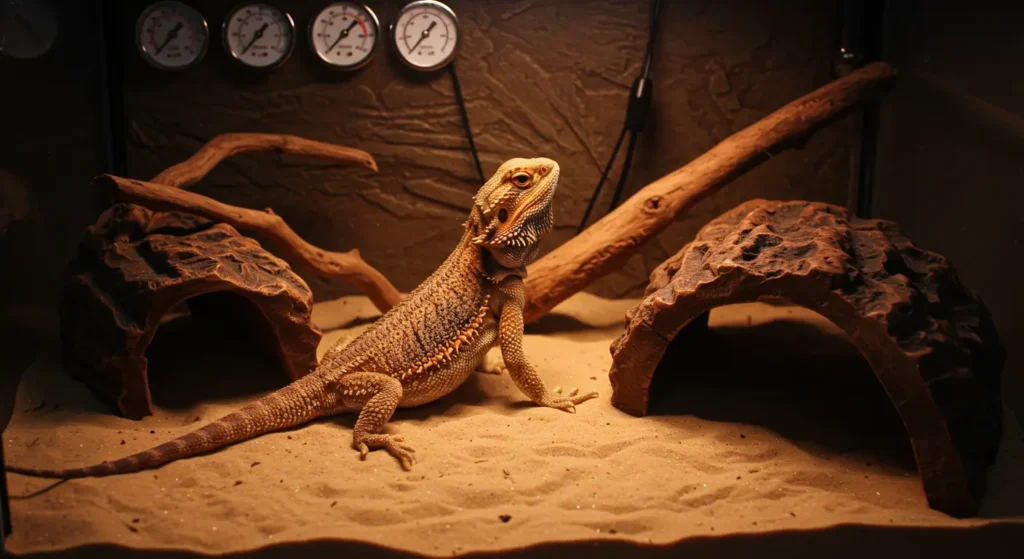
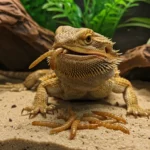

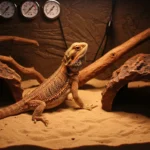
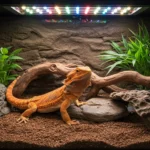
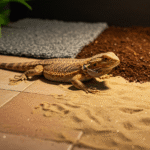
3 thoughts on “How to Keep Your Bearded Dragon Healthy and Happy”